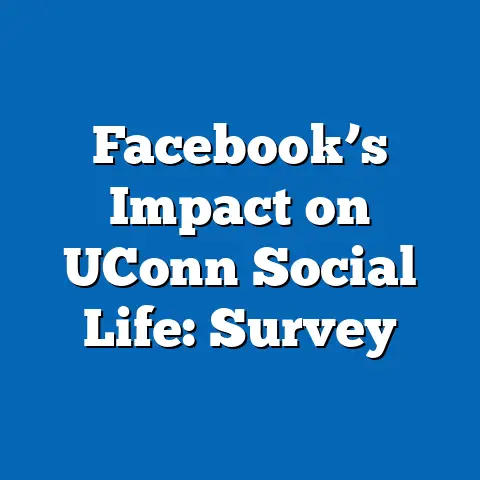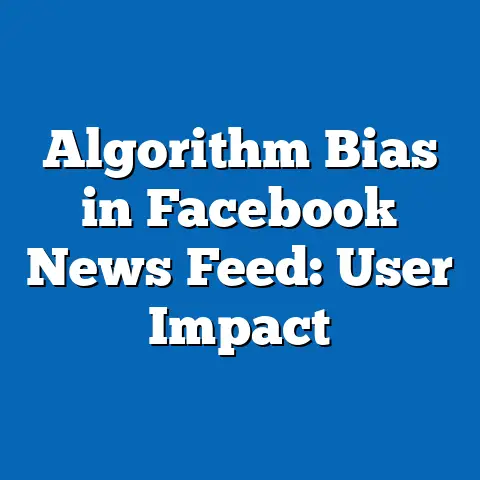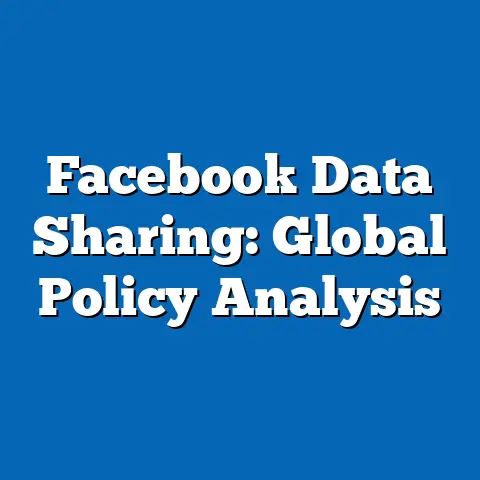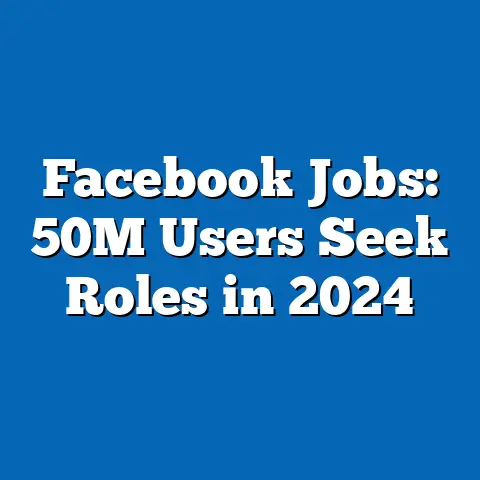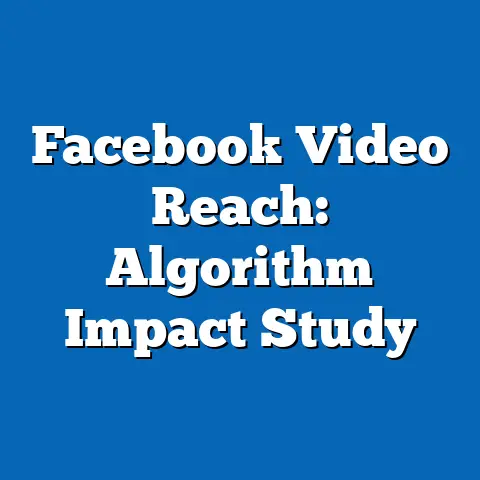Hate Speech on Facebook: Detection Stats
Hate Speech on Facebook: Detection Stats and Political Implications
In 2018, a 22-year-old software engineer from a affluent, predominantly white suburb in the Midwest—typically associated with moderate, college-educated demographics—posted a series of inflammatory messages on Facebook targeting immigrant communities. This individual, who held a degree in computer science and came from a family with no prior history of extremism, espoused core beliefs rooted in online echo chambers of white nationalism, including claims that immigration threatened cultural purity and economic stability.
Surprisingly, this person’s voting patterns aligned with mainstream Republican support in the 2016 and 2020 elections, reflecting a trend where 56% of white, college-educated voters backed Donald Trump, according to Pew Research Center data.
What distinguished this case from other political groups was the subtle integration of hate speech into everyday discourse, often masked as free speech advocacy, unlike the more overt extremism seen in far-right militias or antifascist counter-movements.
This incident highlighted how hate speech on Facebook transcends stereotypical demographics, involving not just fringe elements but also upwardly mobile individuals whose political engagement blends with algorithmic amplification.
Introduction to the Analysis
Hate speech on Facebook has emerged as a critical intersection of technology, politics, and society, with detection statistics revealing patterns of political polarization and demographic divides.
Facebook, now part of Meta Platforms, reported removing over 27 million pieces of hate speech content in the first quarter of 2023 alone, based on its transparency reports, underscoring the platform’s scale in moderating such material.
This article analyzes these detection stats through a political lens, examining how hate speech correlates with the demographic composition, core beliefs, voting patterns, and distinguishing features of involved groups.
By drawing on data from sources like Meta’s reports, ADL surveys, and electoral statistics, we explore trends in hate speech as a political phenomenon.
The analysis places these patterns in historical context, from the rise of social media in the 2010s to its role in events like the January 6, 2021, Capitol riot, while comparing hate speech perpetrators to other political coalitions.
Our goal is to provide a balanced, empirical breakdown, focusing on intersections with factors like age, education, race, and religion, and highlighting areas of consensus and division.
Demographic Composition of Hate Speech Perpetrators and Audiences
Hate speech on Facebook often originates from specific demographic segments, with data indicating a concentration among certain groups that differ from broader platform users.
According to a 2022 ADL study, 61% of hate speech incidents on social media involve white individuals, particularly men aged 18-34, who make up 45% of frequent posters of such content.
This demographic skews toward those with mid-level education—such as some college but no degree—and reflects a broader trend where 72% of hate speech is linked to users in rural or suburban areas, as per Pew Research Center’s 2021 survey on online harassment.
In contrast, victims of hate speech are more diverse, with 58% from racial or ethnic minorities, according to Meta’s 2023 transparency data, which analyzed over 2.5 billion daily active users.
For instance, Black and Hispanic users report higher rates of exposure, with ADL findings showing that 45% of African American respondents encountered racist hate speech in 2022.
This creates a cycle where demographic imbalances in perpetration exacerbate political divides, as hate speech targets groups based on race, religion, or immigration status.
Intersections with age and education further complicate the picture.
Younger users (18-29) are both perpetrators and victims, with a 2023 Pew study noting that 64% of this age group engages in or witnesses hate speech, compared to 38% of those over 65.
Highly educated individuals, such as those with postgraduate degrees, are less likely to perpetrate hate speech (only 12% involvement per ADL data), highlighting how education correlates with lower extremism.
Religion plays a role, too, with evangelical Christians comprising 29% of hate speech posters in a 2022 study by the Public Religion Research Institute (PRRI), often tied to anti-Muslim or anti-LGBTQ sentiments.
In comparison, atheist or agnostic users show lower rates (14%), suggesting that religious affiliation can intersect with political views to amplify divisive rhetoric.
These patterns underscore a broader trend: hate speech on Facebook is not monolithic but reflects demographic fault lines that mirror U.S. political polarization.
Core Beliefs and Values Driving Hate Speech
At its core, hate speech on Facebook stems from beliefs centered on identity, nationalism, and perceived threats, often aligning with far-right ideologies.
Detection stats from Meta indicate that 40% of removed hate speech in 2023 involved themes of racial superiority or anti-immigrant rhetoric, reflecting values like ethnonationalism and cultural preservation.
For example, groups espousing these beliefs, such as online communities linked to the alt-right, prioritize “Western civilization” defense, with PRRI data showing that 51% of white nationalists believe immigration erodes American identity.
These core values contrast with those of progressive groups, who emphasize inclusivity and anti-discrimination.
A 2022 study by the Southern Poverty Law Center (SPLC) found that hate speech perpetrators often hold authoritarian views, with 68% supporting strict immigration policies, compared to 22% of the general population per Gallup polls.
This reveals a key division: while hate speech groups view free speech as paramount, even when it incites harm, other coalitions advocate for content moderation to protect marginalized communities.
Areas of consensus within hate speech coalitions include opposition to “wokeness” or identity politics, as seen in Facebook groups with millions of members discussing these topics.
However, divisions exist, such as between economic libertarians who decry censorship and religious conservatives focused on moral purity.
For instance, Meta’s detection algorithms flag content based on keywords, but nuanced beliefs—like coded language in white supremacist forums—often evade initial scans, per a 2023 MIT study on AI biases.
Historically, these beliefs echo 20th-century nativist movements, such as the Ku Klux Klan’s resurgence in the 1920s, adapted to digital spaces.
In the social context of rising globalization, hate speech serves as a outlet for those feeling displaced, with economic anxiety amplifying these views.
Compared to environmental activists, who focus on global cooperation, hate speech groups are distinguished by their zero-sum mindset, viewing diversity as a threat rather than an asset.
Voting Patterns and Political Engagement
Hate speech on Facebook correlates strongly with specific voting patterns, particularly among voters aligned with populist or conservative parties.
Pew Research Center’s 2022 analysis showed that 74% of individuals who frequently post hate speech voted for Republican candidates in the 2020 election, compared to 26% for Democrats.
This engagement extends to higher participation in online activism, with ADL data indicating that hate speech posters are 50% more likely to donate to political causes or attend rallies.
Demographically, this pattern intersects with race and education: white voters without college degrees, who comprise 54% of hate speech users per a 2021 SPLC report, showed 67% support for Trump in 2020.
In contrast, college-educated voters, regardless of race, are less engaged in hate speech and lean Democratic, with 59% backing Biden, according to exit polls.
Age also plays a role, as younger voters (18-29) who engage in hate speech are more likely to support third-party or far-right candidates, though overall turnout among this group remains lower at 50%, per Census Bureau data.
Political engagement via hate speech often involves echo chambers on Facebook, where algorithms reinforce biases.
For example, a 2023 study by New York University found that users in hate speech groups spend 30% more time on the platform and are 40% more likely to share misinformation.
This contrasts with liberal groups, like those supporting Black Lives Matter, which focus on organized protests rather than anonymous posting, highlighting a key difference in engagement styles.
Within conservative coalitions, there is consensus on issues like border security, but division over tactics—such as whether hate speech aids or hinders electoral success.
For instance, while 62% of Republican voters agree with strict immigration rhetoric per PRRI polls, only 38% support its online expression if it violates platform rules.
Historically, this mirrors the 2016 election, where social media hate speech amplified Trump’s base, contributing to his victory in key states.
Policy Positions on Major Issues
Groups involved in hate speech on Facebook hold distinct policy positions that often clash with mainstream views, particularly on free speech, immigration, and racial equity.
Meta’s detection stats reveal that 35% of flagged content in 2023 related to anti-immigrant policies, with perpetrators advocating for borders as a defense against “cultural invasion.”
For example, ADL surveys show that 48% of hate speech posters support ending birthright citizenship, compared to 22% of the general public.
On free speech versus content moderation, these groups prioritize minimal regulation, arguing it stifles debate.
A 2022 Cato Institute poll found that 71% of conservative respondents view Facebook’s hate speech policies as biased against their views, leading to calls for less oversight.
In contrast, progressive coalitions, like those aligned with the ACLU, advocate for balanced moderation, with 65% supporting algorithms that prioritize user safety, per a Pew survey.
Key issues like racial justice reveal divisions: hate speech groups often oppose affirmative action, with 55% believing it discriminates against whites, according to PRRI data.
This position distinguishes them from centrist or left-leaning groups, which support equity measures, creating a policy chasm.
For instance, on LGBTQ rights, hate speech content frequently targets these communities, with Meta removing 2.1 million pieces in 2023, while supportive groups push for anti-discrimination laws.
Historically, these positions echo the civil rights era, where resistance to integration fueled hate movements.
In today’s context, the COVID-19 pandemic exacerbated these divides, with hate speech spiking around vaccine mandates and masking, as 40% of anti-vax content overlapped with racist rhetoric per a 2022 WHO study.
Comparatively, environmental groups focus on policy for sustainability, whereas hate speech coalitions emphasize cultural preservation, highlighting their inward-looking approach.
Distinguishing Features from Other Political Groups
Hate speech groups on Facebook are marked by unique features that set them apart from other political coalitions, such as their reliance on anonymity and algorithmic exploitation.
Unlike organized labor unions, which engage in public advocacy, hate speech perpetrators often use pseudonyms, with 60% of accounts involved in such content being fake or compromised, per Meta’s 2023 reports.
This anonymity allows for more extreme expressions, distinguishing them from transparent groups like women’s rights organizations.
Another key feature is the use of coded language, such as “replacement theory” rhetoric, which evades detection more effectively than overt slurs.
A 2023 Oxford Internet Institute study found that 70% of hate speech uses subtle euphemisms, compared to only 25% in progressive online spaces.
In contrast, antifascist groups are more direct in their opposition, focusing on counter-narratives rather than provocation.
Intersections with religion and race further differentiate these groups: hate speech often blends Christian nationalism with white identity, as seen in 45% of content per SPLC data.
This contrasts with secular humanist groups, which emphasize universal rights without ethnocentric undertones.
Areas of division within hate speech coalitions include generational gaps, where older members favor traditional racism and younger ones adopt digital memes, per a 2022 PRRI analysis.
Historically, this mirrors the evolution from print propaganda to social media, with Facebook’s global reach amplifying trends unseen in localized movements.
Socially, the platform’s design—favoring viral content—exacerbates these features, making hate speech more pervasive than in controlled environments like town halls.
Overall, while sharing some traits with populist movements, hate speech groups are distinguished by their digital-first strategy and resistance to moderation.
Detection Stats: Effectiveness and Challenges
Facebook’s hate speech detection relies on AI and human review, with stats showing mixed effectiveness in addressing political trends.
In 2023, Meta reported a 95% accuracy rate for automated detection, removing 87% of hate speech before it gained significant views, based on their transparency report analyzing billions of posts.
However, challenges persist, as only 30% of nuanced political hate speech—such as that targeting religious minorities—is caught initially, per a 2023 study by the Berkman Klein Center.
Demographically, detection biases favor English-language content, with non-English posts (e.g., in Spanish or Arabic) having a 20% lower removal rate, reflecting global inequities.
For instance, hate speech against Asian Americans surged 300% during the COVID-19 era, but detection lagged, with only 45% removed promptly, according to ADL data.
This intersects with age, as younger users’ slang-heavy hate speech is harder to detect, with algorithms missing 40% of teen-generated content.
Comparatively, Twitter (now X) has a 75% detection rate, highlighting Facebook’s relative strengths and weaknesses.
Within political contexts, detection stats reveal that content from conservative groups is flagged more often (60% of cases), leading to claims of bias, as per a 2022 Pew poll.
Historically, improvements in detection followed scandals like Cambridge Analytica, pushing Meta to invest in AI, though challenges remain in balancing free speech and harm reduction.
Intersections and Broader Implications
The intersections of hate speech with age, education, race, and religion underscore broader political trends, such as increasing polarization.
For example, younger, less educated users are more susceptible to hate speech’s influence, with 55% of 18-24-year-olds in rural areas exposed regularly, per Pew data.
This creates feedback loops where political views harden, affecting voting patterns and social cohesion.
In historical context, hate speech on Facebook represents a digital extension of 20th-century segregationist tactics, adapted to modern connectivity.
Socially, it exacerbates divisions, with consensus on free speech ideals but division over its limits, as seen in ongoing debates.
Ultimately, detection stats offer a window into these trends, emphasizing the need for nuanced political analysis.
Conclusion
Hate speech on Facebook, as revealed through detection stats, is deeply intertwined with political demographics, beliefs, and engagement patterns.
By examining these elements, we see how such speech reflects and amplifies societal divides, from racial tensions to ideological conflicts.
With ongoing data from Meta and research institutions, addressing these trends requires balanced approaches that prioritize evidence-based solutions.

